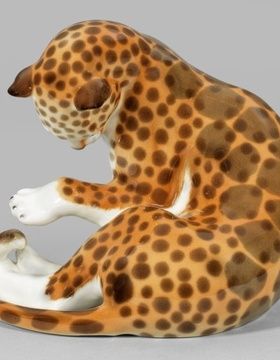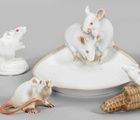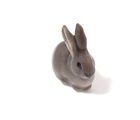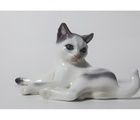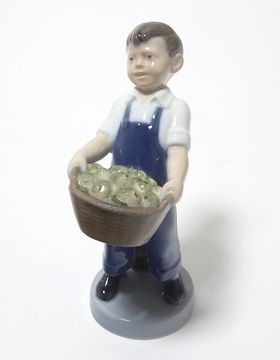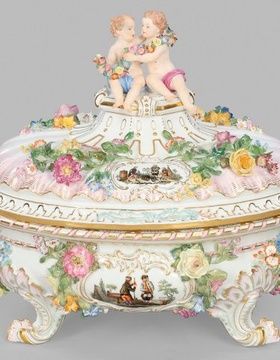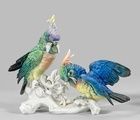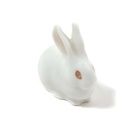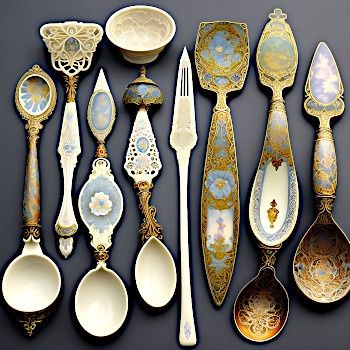
Фарфоровая посуда и другие предметы из фарфора в течение веков служили символом достатка, изысканности и происхождения. Сегодня они доступнее, но фарфор все еще считается материалом престижным для посуды и декоративных изделий, которые способны превратить чаепитие в церемонию. Однако не все фарфор одинаков, и существуют различные виды, каждый со своими уникальными характеристиками и преимуществами.
Первый и наиболее известный вид - твердый фарфор. Он был изобретен китайцами, которые повысили прочность материала, добавив в каолин (белую глину) специальные минеральные добавки, такие как китайский камень и полевой шпат. При обжиге используются температуры более 1400°С. Твердый фарфор - тяжелый материал с сероватым оттенком, хотя основной цвет все же белый. Он прочный, но при этом хрупкий.
Второй вид - костяной фарфор - иногда считается вариантом твердого фарфора. Он получается благодаря добавлению пережженных костей крупного рогатого скота. Материал более прочный, но при этом тонкий и гладкий. Костяной фарфор белоснежный и полупрозрачный, что делает его самым изысканным видом для аристократических сервизов и декоративных изделий.
Третий вид - мягкий фарфор, который иногда называют искусственным фарфором. Он был придуман в Италии в XVI веке, добавляя стекловидные вещества к тонкомолотой глине. Из-за более низкой температуры обжига (до 1350°С) поверхность остается немного пористой, а не гладкой. Материал имеет легкий сливочный оттенок и теплый, поэтому уютный вид. Красота росписи на мягком фарфоре проявляется более легко и естественно, чем на твердом.
Региональные характеристики фарфора
Фарфор - это один из наиболее изысканных материалов, используемых в производстве предметов интерьера и декоративных изделий. Он может иметь различные характеристики, которые зависят от региона, где он был произведен.
Например, китайский фарфор характеризуется своей тонкостью, прочностью и белизной. Его производство находится на высоком уровне уже более тысячи лет, и он до сих пор считается одним из самых качественных видов фарфора в мире. Китайский фарфор узнаваем благодаря своим характерным орнаментам и краскам, а также технике глазурирования.
Европейский фарфор, в свою очередь, имеет более широкий спектр цветов и декоративных элементов. Французский фарфор может быть красочным, роскошным и вычурным, в то время как немецкий фарфор может быть более утонченным и изящным.
Кроме того, существуют и другие региональные характеристики фарфора. Например, японский фарфор характеризуется своей грациозностью, изящностью и тонкостью. Он обычно имеет нежные цвета и минималистичные декоративные элементы.
Несмотря на то, что основными видами фарфора являются твердый, костяной и мягкий, качество и свойства материала могут также зависеть от страны происхождения. Региональные характеристики определяются особенностями используемой глины, добавок, технологических процессов и традиций производства.
Например, фарфоровая посуда, произведенная в Японии, известна своей тонкостью и изяществом, а китайский фарфор славится своей древностью и мастерством производства. Французский фарфор также знаменит своей высокой прочностью и уникальным дизайном.
Некоторые регионы специализируются на определенных типах изделий, таких как вазы, статуэтки, чайные и обеденные сервизы, что отражает традиции и культуру данного региона.
В целом, фарфоровая посуда и изделия декора являются не только функциональным элементом быта, но и объектом искусства. Их свойства, качество и дизайн зависят от многих факторов, включая материал, технологии производства и региональные традиции.
Фарфор является одним из самых известных материалов для создания предметов быта и искусства. Однако, фарфор может отличаться не только по своим функциональным и эстетическим характеристикам, но и по региональным особенностям. В разных регионах мира производят фарфор с уникальными характеристиками, которые отличаются по составу, технологии производства, декору и стилю.
Одним из наиболее известных источников фарфора является Китай. Китайский фарфор известен своей изящностью и тонкостью, а также своим белоснежным цветом. Он производится из глины, содержащей каолин. Китайский фарфор известен своим высоким качеством и роскошным декором, который может быть выполнен в различных стилях, включая традиционный китайский узоры, гравюры и изображения животных.
Европейский фарфор производится из разных материалов, включая каолин, фельдспат и глину. Его производство развивалось с 18 века в Германии, Франции, Англии и других странах. Европейский фарфор известен своим изысканным стилем и декором, включая изображения цветов, птиц, животных и людей, а также абстрактные узоры. Фарфор из Германии, например, часто имеет замысловатый декор в стиле барокко, а фарфор из Англии может быть узнан по своим изображениям цветов и растительности.
Также стоит упомянуть о японском фарфоре, который может быть выполнен в традиционном японском стиле, известном как Имари, или быть современным и абстрактным.
Каждый вид фарфора имеет свои уникальные особенности, которые важны для знатоков и коллекционеров. Например, мягкий фарфор может иметь более яркие и насыщенные цвета, чем твердый фарфор, что делает его более привлекательным для использования в художественных изделиях.
Кроме того, культурные и исторические значения фарфора невозможно переоценить. Фарфоровые изделия, созданные в разные эпохи и в разных странах, являются своего рода окном в культуру и традиции тех времен и мест, где они были созданы. Благодаря сохранности некоторых изделий, мы можем ознакомиться с технологиями, использованными для их создания, а также с искусством и дизайном, которые были популярны в тех временах.
В целом, фарфор является не только материалом для создания красивых и прочных предметов, но и культурным и историческим наследием человечества. Различные виды фарфора имеют свои уникальные характеристики и особенности, которые важны для понимания и оценки истории и культуры тех времен и мест, где они были созданы.
